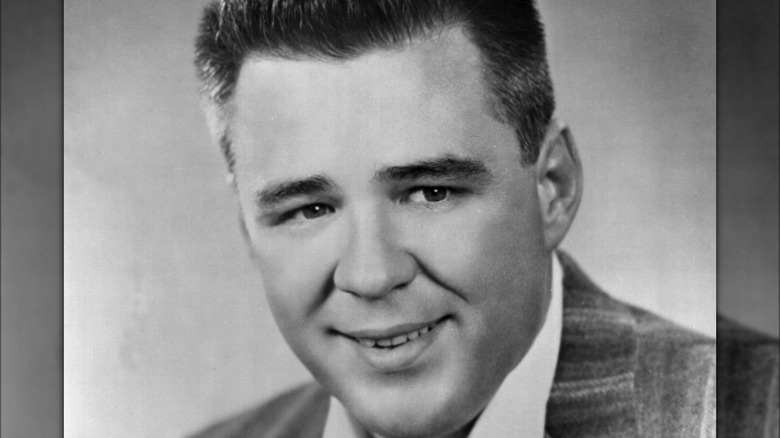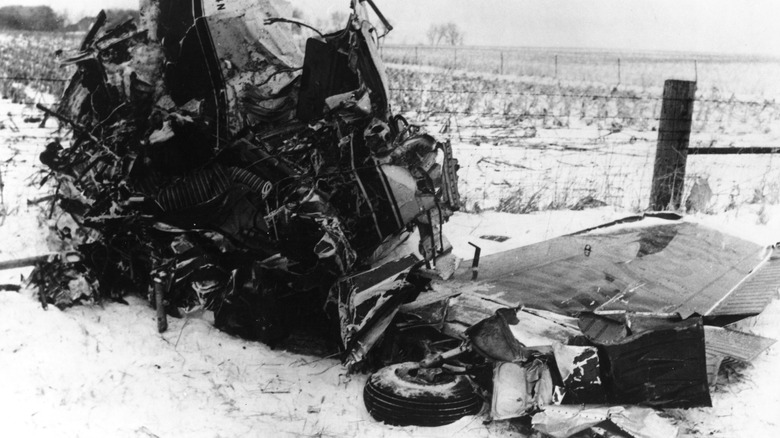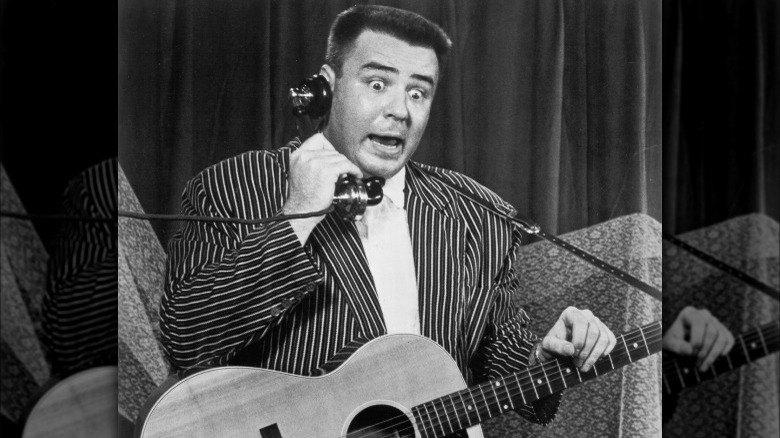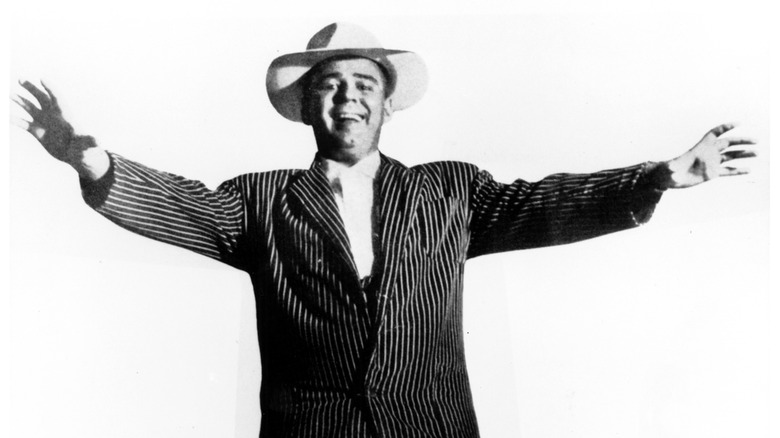Tragic Details Found In The Big Bopper's Autopsy Report
Jiles Perry Richardson, more famously known as The Big Bopper, was born in 1930 in Sabine Pass, Texas. He had dreams of becoming a lawyer, but he was naturally gifted when it came to music and was part of the chorus in college. It was also during that time when he worked at the Beaumont radio station KTRM. He was eventually offered a full-time position, and he became known as "The Big Bopper," which was a reference to a popular dance move at that time called The Bop, per Live About.
Richardson was so successful with his work at the radio station that he became a program director, and his dream of becoming a lawyer was set aside. At the same time, The Big Bopper started writing his own songs, and he was signed under a record label. Despite his first single being popular with the country crowd, it didn't penetrate the music charts. That all changed, however, when he released the song "Chantilly Lace" in 1958. It reached a peak position of No. 16 on the pop charts and was in the Top 40 for 22 weeks (via Buddy the Musical). Soon, The Big Bopper was a star, and he joined other singers at the Winter Dance Party in 1959 — a 24-day tour of big musicians through the mid-western party of the country. The tour started on January 23, 1959, in Milwaukee, Wisconsin.
The day the music died
On February 2, 1959, The Big Popper, Ritchie Valens, and Buddy Holly had just played a gig in Clear Lake, Iowa, and they were scheduled to travel to Moorhead, Minnesota next. Prior to that, the musicians had been traveling in a freezing tour bus, and Holly decided to charter a plane to get to their next gig. The three boarded a small Beechcraft Bonanza plane at approximately 12:30 a.m. on February 3. Shortly after takeoff, the plane crashed into a cornfield just a few miles from the airport, according to Live About.
Valens, Holly, and Richardson were thrown out of the plane, while the pilot was found in the cockpit; all four of them died. Per Biography, initial investigations into the incident blamed the 21-year-old pilot Roger Peterson and bad weather for the accident. It was later found out that although Peterson had sufficient flying hours and had passed his written test, he was yet to qualify for flying using only reference instruments, which was what he had to do that night. In 2015, aviation expert L.J. Coon pushed to reopen the investigation into the accident, as he said that it may have been caused by other factors, such as weight distribution and technical issues, but the National Transportation Safety Board had declined to reopen the case, as reported by the Des Moines Register.
In 1972, singer Don McLean memorialized the death of the three musicians in his song "American Pie," where he referred to the date of the accident as "the day the music died."
The Big Bopper's investigation report
At the crash site, Buddy Holly and Ritchie Valens were discovered near the plane, while The Big Bopper's remains were almost 40 feet away from the site (via The Washington Post). An autopsy was not performed right after the crash, but the coroner's investigation report revealed the disturbing condition of Jiles Perry Richardson's body.
The Big Bopper was found wearing a red flannel shirt with blue pants. His head was badly crushed, and according to the coroner, his skull was split open and his brain was "completely eviscerated." The right side of his head sustained the most damage, and he couldn't be identified merely by looking at him. The coroner had to take his fingerprints to confirm his identity, per the report on Autopsy Files. Aside from the damage to his skull, Richardson's arms were also fractured, and he had a small laceration on one of his fingers. There was also a laceration on his thigh where a fracture was evident. Furthermore, the coroner noted that bones on his chest were crushed. Internal injuries weren't identified, as an autopsy wasn't performed. The report also listed the personal effects that were found on his person including a wedding ring, a key, a pair of dice, a guitar pick, and his wallet. He was 28 years old.
The Big Bopper's autopsy nearly 50 years after his death
In 2007, an autopsy was conducted on Jiles Perry Richardson 48 years after the plane crash that took his life. It was done at the request of his son, Jay Richardson, who was still in his mother's womb when his father died (via The Washington Post). He wanted some answers regarding his father's death, one of them being whether or not the Big Bopper survived the impact. Since his body was found farther than the others, there were some who believed he was able to walk away from the crash before eventually dying. A gun was also found at the site, which sparked rumors that Big Bopper was shot.
Dr. Bill Bass, a renowned forensic anthropologist, conducted the autopsy. The Big Bopper's body was in good condition, and X-rays were taken. The results confirmed the fractures the coroner reported in the investigation, and they were present from his head up to his legs. There was no lead mark that signifies being hit by a bullet, putting to rest the rumor that he was shot. According to Dr. Bass, Richardson most likely died immediately upon crashing based on the injuries he found during the autopsy, as reported by Knox News. "There was no indication of foul play. There are fractures from head to toe. Massive fractures. He died immediately. He didn't crawl away. He didn't walk away from the plane," Dr. Bass confirmed (via Today).



